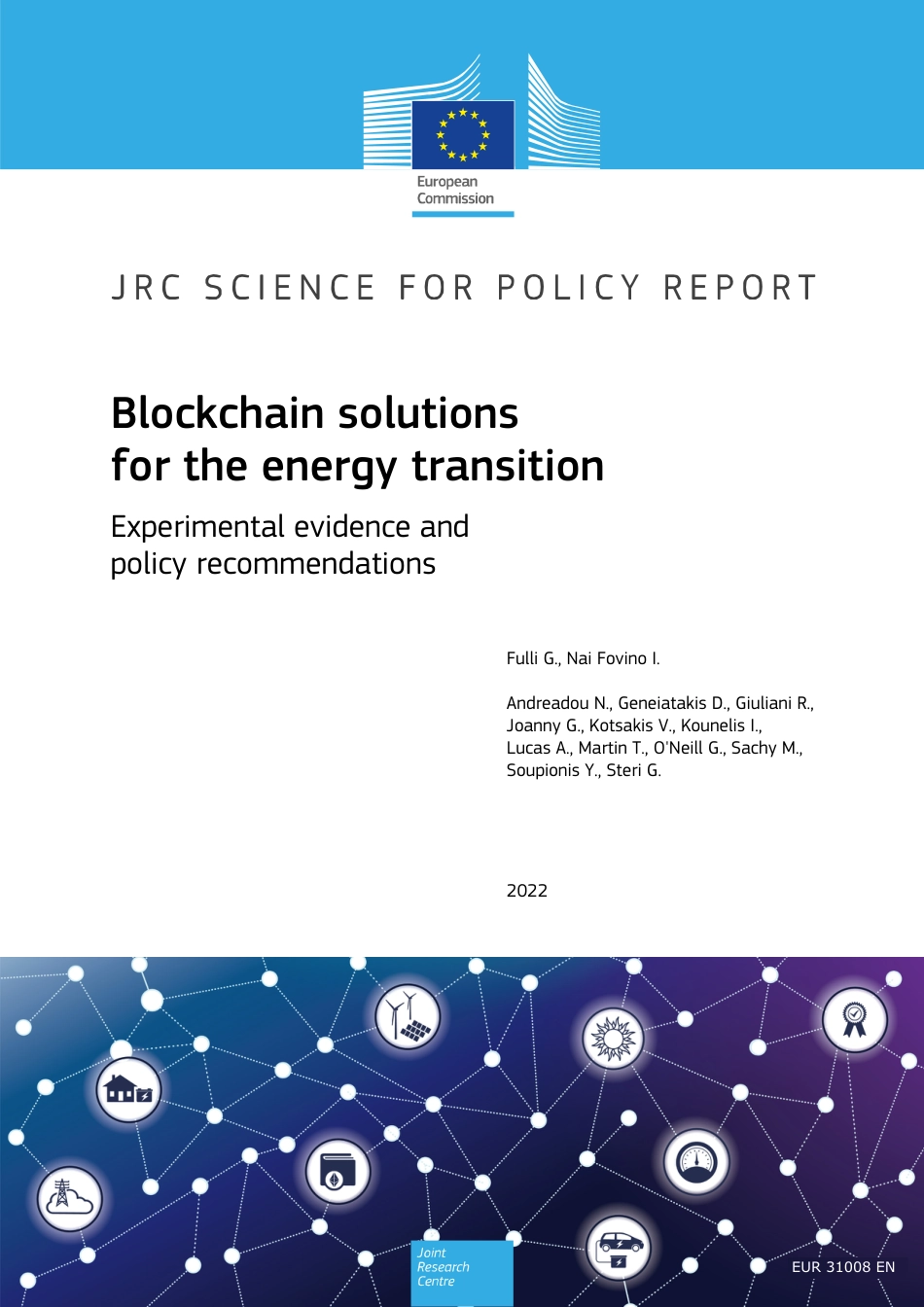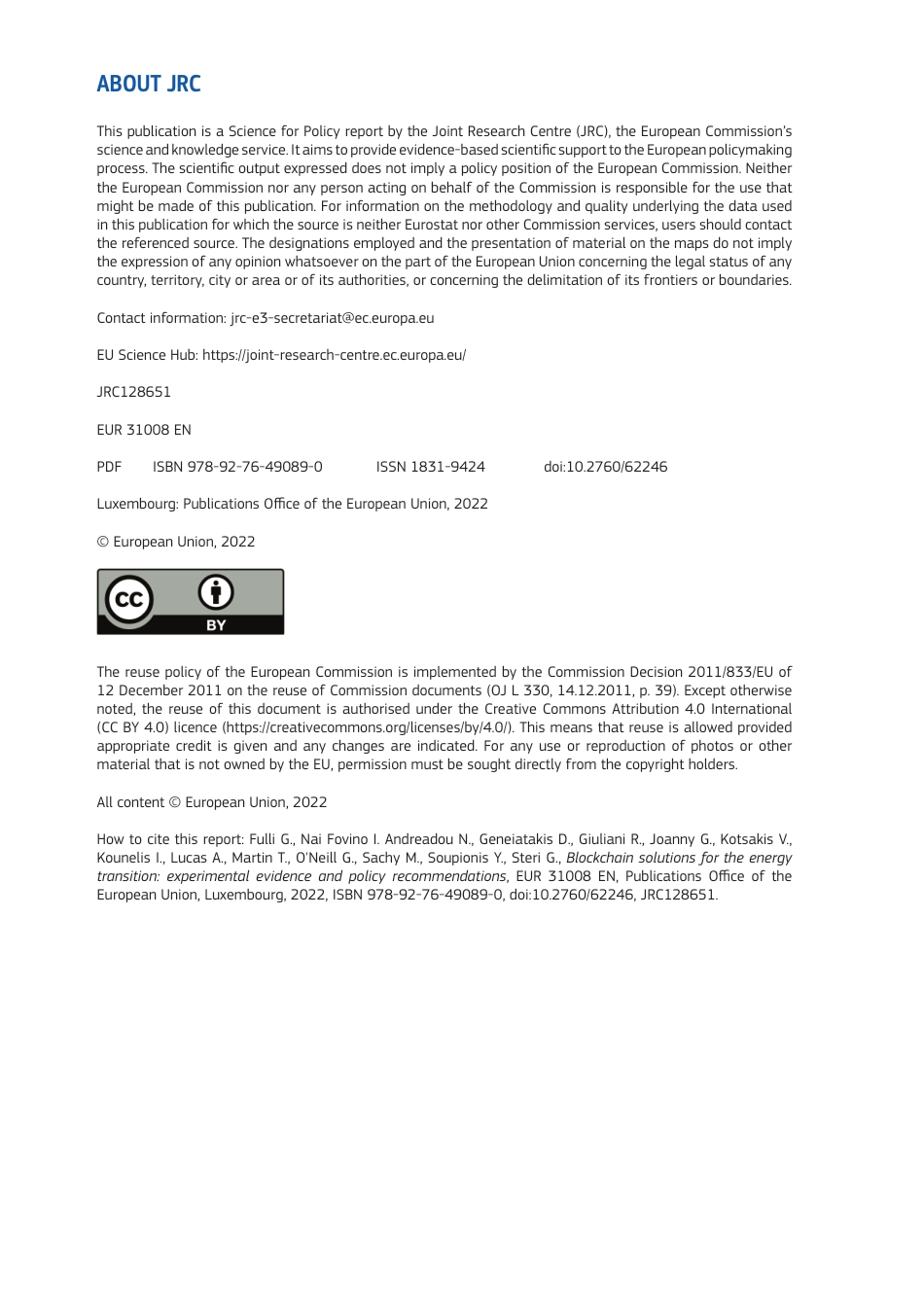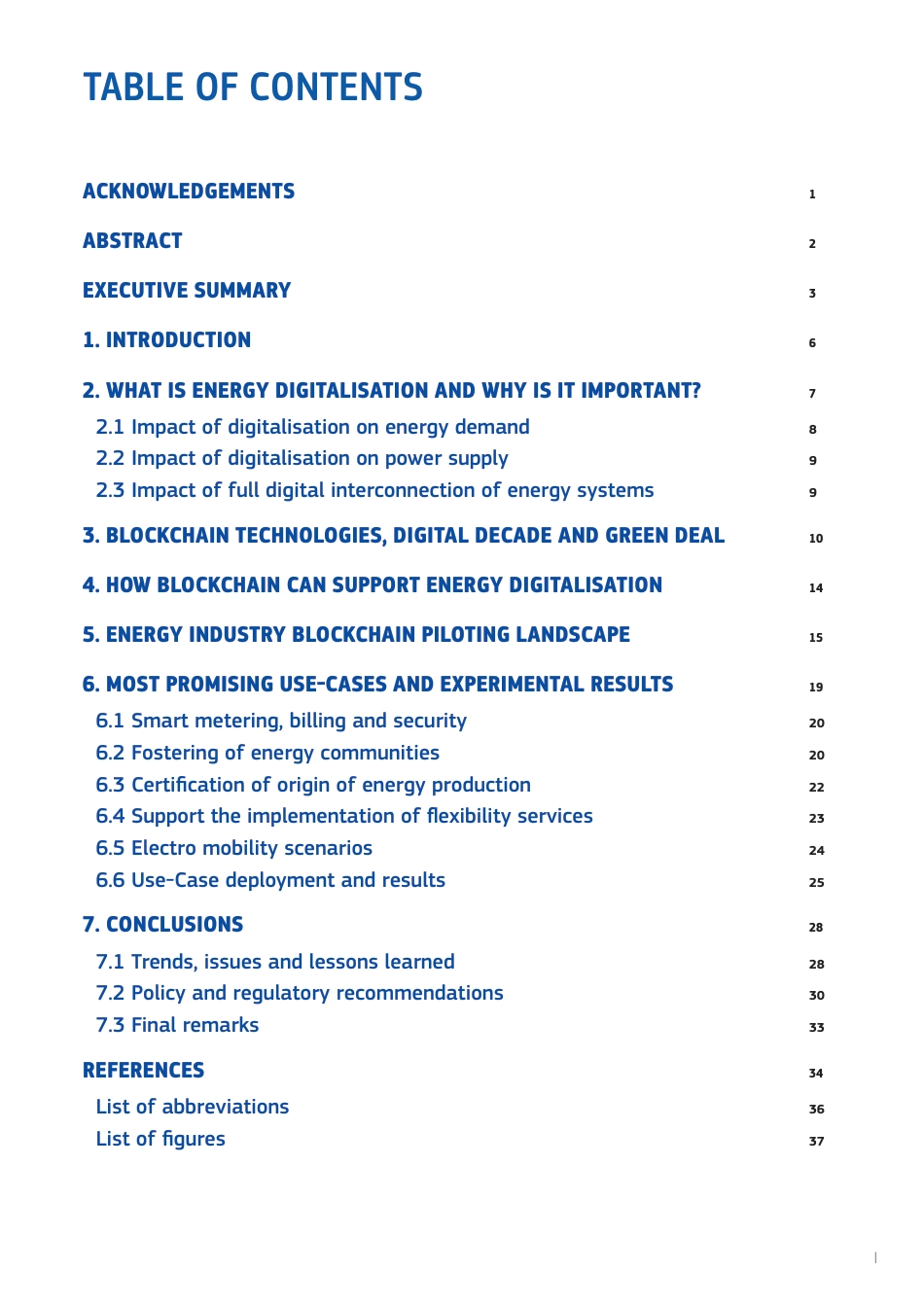Blockchain solutions for the energy transitionExperimental evidence and policy recommendations Fulli G., Nai Fovino I.Andreadou N., Geneiatakis D., Giuliani R., Joanny G., Kotsakis V., Kounelis I., Lucas A., Martin T., O'Neill G., Sachy M., Soupionis Y., Steri G. 2022 EUR 31008 EN ABOUT JRCThis publication is a Science for Policy report by the Joint Research Centre (JRC), the European Commission’s science and knowledge service. It aims to provide evidence-based scientific support to the European policymaking process. The scientific output expressed does not imply a policy position of the European Commission. Neither the European Commission nor any person acting on behalf of the Commission is responsible for the use that might be made of this publication. For information on the methodology and quality underlying the data used in this publication for which the source is neither Eurostat nor other Commission services, users should contact the referenced source. The designations employed and the presentation of material on the maps do not imply the expression of any opinion whatsoever on the part of the European Union concerning the legal status of any country, territory, city or area or of its authorities, or concerning the delimitation of its frontiers or boundaries.Contact information: jrc-e3-secretariat@ec.europa.eu EU Science Hub: https://joint-research-centre.ec.europa.eu/JRC128651EUR 31008 ENPDF ISBN 978-92-76-49089-0 ISSN 1831-9424 doi:10.2760/62246Luxembourg: Publications Office of the European Union, 2022© European Union, 2022 The reuse policy of the European Commission is implemented by the Commission Decision 2011/833/EU of 12 December 2011 on the reuse of Commission documents (OJ L 330, 14.12.2011, p. 39). ...



